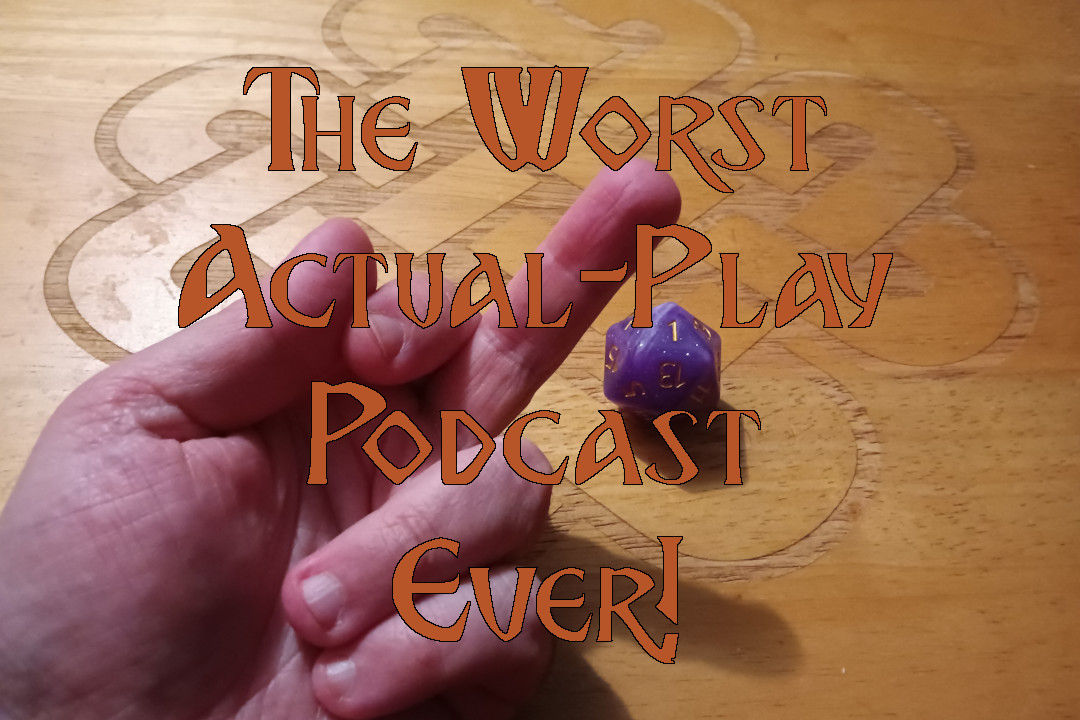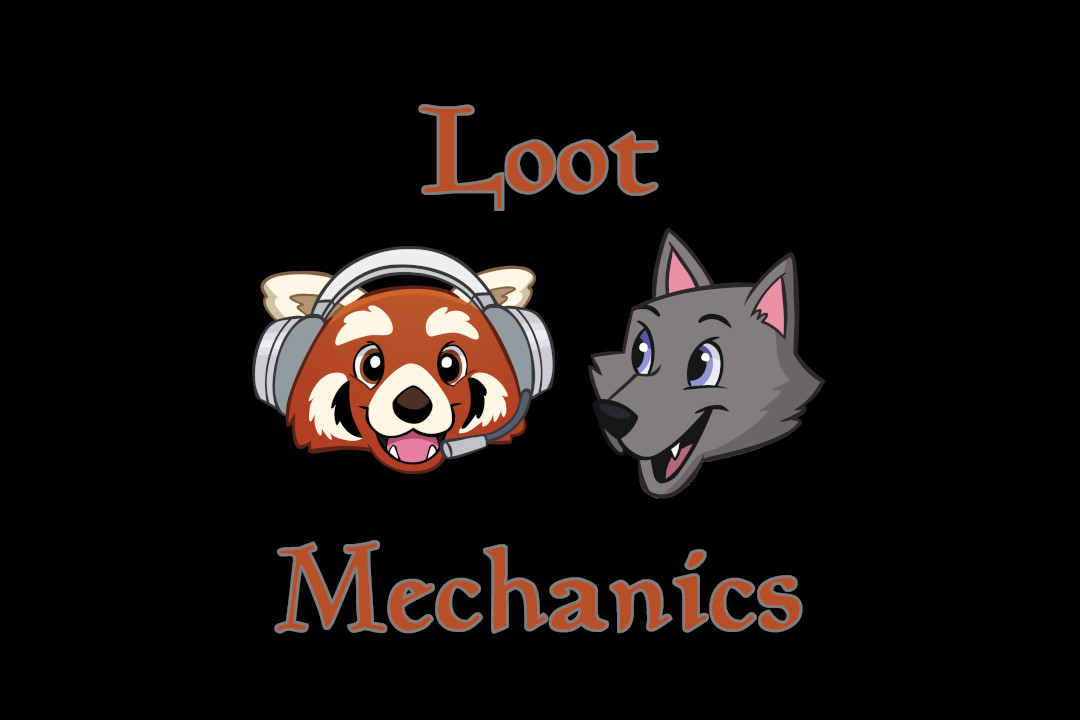So here we are again, coming to the final weekend of Spooky Season, with Halloween but a couple of days hence. Perhaps you have held off on running a horror-themed adventure until now, waiting for this weekend in particular because… well, why wouldn’t you? It’s freaking Halloween! But now you have a problem. Maybe you have an adventure idea, perhaps something already written up and ready to go, but you just aren’t sure if it will work.
Trust me, this isn’t an uncommon problem. Horror is easy, but actually scaring your players is hard.
I’ve been playing and running tabletop roleplaying games since the late 1970’s, and I’ve been involved in all manner of games in that time, especially horror (whether in horror-specific games or not). I can tell you from these decades of experience that you can run the best horror games ever produced, or horror-themed adventures in otherwise non-horror games, and your players will treat them as if they were a simple hack-&-slash. Worse yet, they might start laughing, finding the whole situation – as horrific as it might be – as comical!
For example, I’ve always said the best Comedy/Party TTRPG on the market is “Call of Cthulhu”.
Why is this? Because no matter how good the game or adventure is, no matter the skill of the person running the game, there is always one thing shielding your Players from the Horror: They are not their Characters. No matter what might happen to those characters, they know they can easily make up another one, should their current one die. Sure, they might feel some attachment to their characters, but they won’t be scared when that character is placed in horrific situations… not even if they are brutally killed in the process. If anything, they will just be mad at the GameMaster for ‘unfairly’ taking that character away from them.
Not exactly the sort of situation you want for some fun, spooky gaming at Halloween, is it? So, what is there to be done? Can true Horror be achieved in a tabletop roleplaying game, with the Players feeling this inherent separation from their Characters?
Yes, and really, it is pretty simple to achieve. Note: I said simple. I did not say it would be easy, because this will take a lot of work on the GM’s behalf.
The problem starts with that inherent separation, as I discussed above, but that can be overcome. How? Ambiance. Mood. Characterization. Let’s look at each of these, in turn.
First, Ambiance. You need to set the proper ‘feeling’ for your Spooky Season games, be that with dim lighting (candles), soft-yet-creepy sounds and music playing in the background, perhaps even providing less than comfortable seating (puts the players on edge from the start). Avoid cheesy Halloween decorations, which tend to actually make players less likely to be afraid. For the most part, keep things simple, but always be keeping the quiet pressure on them psychologically.
That said, as with any sort of tabletop roleplaying, you need to be sure to avoid triggering your players who may be especially susceptible to certain fearful stimuli. You want to scare your players in a fun way, not terrify them, and potentially ruin friendships, in the process.
Next, let’s talk a bit about Mood. Many might think this is synonymous with Ambiance, and it can be, but there is a distinct line here. In this discussion, Ambiance is used to describe the stimuli you are placing around your Players. Mood, in this case, relates to how you describe the world and situations you are placing their Characters in. Let’s look at how I might describe a forest the characters are travelling through, say in a normal game:
“Your characters have been following this road for several days now, on their way to [Insert Destination Here]. It started out as passing through first fields of grain, into low, rolling hills, giving way to an increasing scattering of trees. In the last day, though, that forest has grown quite thick, and the road has slowly given way to the underbrush, becoming more like a game trail, at best. The footing is unsure, the going much slower, and you begin to wonder if perhaps you somehow missed a turn, somewhere along the way. When you look back, only the trees remain, the trail disappearing behind you.”
Now let’s look at that same forest, were I setting a proper mood for Horror:
“Your characters have been following this road for several days now, on their way to [Insert Destination Here]. It started out as passing through first fields of grain, into low, rolling hills, giving way to an increasing scattering of trees. The skies were unseasonably thick with clouds before, which have given way to the threatened chilling rain. The once-sparse woods have grown to a full forest, dark and menacing. The path is now quite slick from the rain, and slowly giving way to the underbrush, becoming more like a game trail, at best. The forest is eerily devoid of sound – Only the beating of the rain, the footfalls of your companions, and your own heartbeat fills your ears. All you can see is dim twilight through the trees and drenching rain, even your companions are but blurry forms. You begin to wonder if perhaps you somehow missed a turn somewhere along the way, and should be turning back. But when you do, only the dark of the woods lies behind, the trail now gone, as your muddy tracks are washed away behind you.”
In both cases the characters are lost in a dark forest, but in the first case, it isn’t especially scary. Troubling perhaps, but not especially scary. In the second example, the mood has been set for something truly dreadful to occur. Not only are the characters lost in the woods, they are:
- Miserable from the rain, wet and cold.
- Feeling somewhat claustrophobic from the thick, dark trees around them.
- Mildly put-off by the lack of sounds in the area. Even in the most drenching of rains, insects and animals can be heard in the forest. I grew up in the woods, I know from experience.
- Quietly taking any Darkvision or other such ability away from the characters, due to the close trees and pouring rain, makes them ill at ease.
More importantly, though, the fuller description of the situation will help the Players experience what their Characters might be feeling. It “Puts them in their shoes”, so to speak. Yes, yes, this is always what a GM should be doing, this is true. But in a game where you are looking to really get under your players’ skins, building the proper mood through thorough descriptions is a MUST.
To take that a step further, though, everything you say as the GM should be working to build that mood. Everything. Keep it subtle, keep it simple. Your goal is to always build upon whatever sense of dread you are working for, using little clues and descriptions. Of course, you don’t want to go over-the-top with this. Go too heavy on Mood-building and you can slip into Cheesy-mode, which doesn’t work at all.
HOMEWORK ASSIGNMENT: Go watch the black-&-white masterwork in suspense, “The Haunting” from 1960. Watch it in the dark, completely alone. Pay attention to what the director does with the lighting, sounds, editing, camera work. Note that not a single bit of gore – unlike in the terrible 1990’s remake – is used to scare the audience. This is exactly how you build mood in a horror-themed adventure.
Finally, let’s go into Characterization. This covers how you portray the Non-Player Characters that the party will interact with. I’m sorry to say it, but this will require the best roleplaying you may have ever done in your life, and a lot of GMs simply aren’t up to the challenge. You need to bring your NPCs to life in the minds of your Players, further breathing life into the adventure as a whole. The more you make your NPCs feel like real, breathing characters in your story, the more the Players will buy into that story, and as such will be less likely to disconnect from their Characters, when the Horror truly kicks in.
Again, you need to keep things subtle here. Going in too far will make your NPCs feel cheesy, which helps the Players separate them from the world you are trying to build. All the Ambiance and Mood in the world won’t save your game, if your NPCs come off as cheesy or unbelievable. This takes time, practice, and skill. In many cases, it might be easier to simply run a horror-themed adventure with zero NPCs, by placing the Characters into a dungeon crawl or a dark, haunted wood, just so you can avoid this pitfall. But if you are up to the challenge, put your best foot forward and really dig into what makes those NPCs tick before the game starts, if you want to scare those Players!
Now I know that what I’ve said above might make it seem daunting to run a truly scary Halloween roleplaying adventure, but with practice and a good group of players, the game should go off without a hitch. Oh, what’s that? Yeah, you also need one more, crucial ingredient to make sure your game is a success: A good set of Players, who are willing to buy into the game.
Too often we as GMs have Players that simply want to be entertained, and aren’t willing to dig in with us, and really experience what the story is we are building together. Yes, while the GM starts the story, and helps guide it along, the Players also help build that story, and have more control over where it goes, in the long run. This is why, in my experience, most “Call of Cthulhu” games break down into near-slapstick comedy adventures, rather than the cosmic horror they are intended to be. The game isn’t the problem, nor is the GM (most of the time, anyway). The Players just don’t want to delve into the story, they don’t buy-in, and end up treating it as a Hack-&-Slash adventure, which eventually devolves into everyone joking and laughing, rather than feeling any sense of fear or dread.
So you need to make sure your Players know that you will be running a Horror adventure, and that you need them to work with you, and buy into the game, as it is presented. No jokes, first and foremost. The Players will need to pay attention. There should be no out-of-character chatting once the game starts. The Players also really need to try to stay in character as best they can, and roleplay as their characters would. No meta-gaming (acting upon information the Player has, but the Character would not). If they can’t do this, then they should not bother attending this adventure, and should return for the next, regular game in the campaign, instead. To do otherwise is not fair to the other Players, let alone you, the GameMaster.
Good luck with your Spooky Season games, and Happy Halloween!



